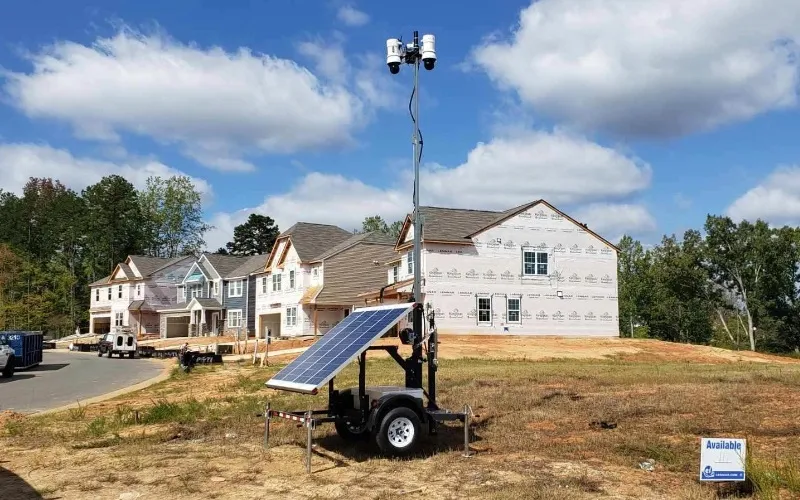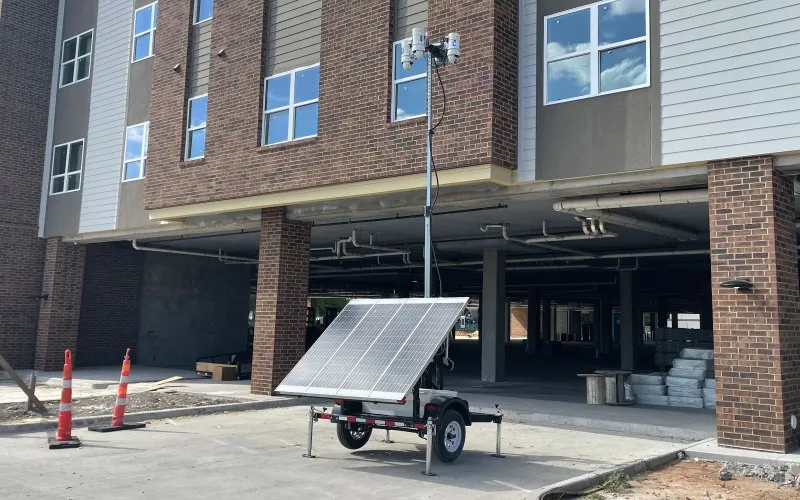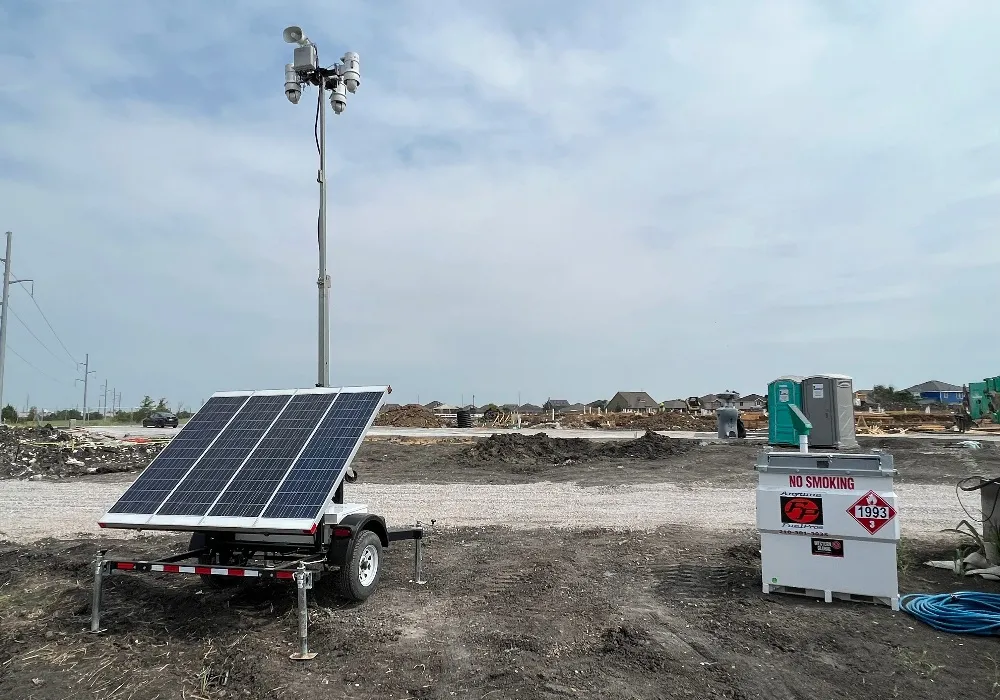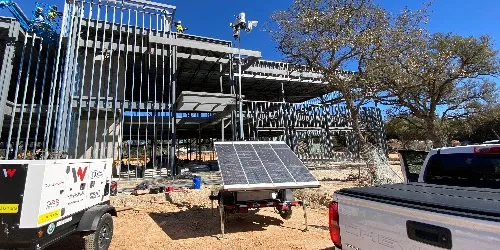Construction sites can present a hazardous environment for workers. Learn how to control and manage those risks, and how security cameras play a vital role.
What are the different ways you can control Construction Site health and Safety?
Construction job sites without the correct controls and safety measures present one of the most hazardous working environments.
The statistics reflect this, too, with over 150,000 accidents or injuries occurring on construction sites across the USA in 2019.
As a construction company owner or manager, you are responsible to your workers and contractors to ensure a safe working environment. This starts with controlling and mitigating health and safety risks, promoting a safety culture, and communicating site rules clearly and consistently.
We outlines below some key ways you can improve your construction site security.
Conduct Regular Risk Assessments
Conducting a risk assessment is the first step to controlling site safety.
A risk assessment should always be conducted at the outset of the project but should also be repeated at regular intervals. This is because job sites constantly change, and new hazards are introduced as site layouts change.
If you have never completed a risk assessment before, it may seem confusing, but all practical assessments will follow five basic steps:
-
Identify the potential hazards (NB: a hazard can be defined as anything that may cause harm/injury)
-
Ascertain who the hazard could harm and in what situation
-
Assess the likelihood and severity of potential harm or injury
-
Take action to remove the hazard or put in measures to mitigate it
-
Make a written record of the hazard and the controls taken
To help get you started with risk assessments, you can download many pre-made templates from occupational safety websites. Take a look and pick one that works best for you.

Understand the Risks and their Root Cause
Understanding the types of risk you're likely to encounter is a vital step in introducing control measures and improving safety.
The US The Occupational Safety and Health Administration (OSHA) has identified the four most common causes of injury on job sites:
-
Trips and falls
-
Electrocution
-
Object strikes
-
Caught between objects
Knowing the key risks will help you better identify them, where they are most likely to occur, and the harm they could cause. You should turn this information into actionable control measures being taken.
Hold Regular Safety Briefings
Once you have identified the potential risks on your job site and put controls and site rules in place, you must transfer this knowledge to your workforce.
Holding a regular safety briefing is a great way to keep health and safety at the front of your worker's minds and helps make them aware of any newly identified risks as the site develops.
A daily safety briefing by your foreman or supervisors will create a culture of safety.
Provide Ongoing Training
Regular staff training is a great way to reduce risk, promote a safe culture and keep your workforce engaged and motivated.
The training might be specific to health and safety best practices, correct operation of machinery, or even something more specific to your site or company.
Whatever you do, investing in your team's skills and knowledge will only have a positive impact, and in time they will be spotting hazards and controlling them before they even become an issue.

Promote Awareness Through Effective Communication
Effective communication is a vital element in the development of a positive safety culture.
Developing and implementing effective communication processes that promote awareness and understanding of health and safety management and the specific issues your workforce will face is essential.
You can partly achieve this via a daily safety briefing, but other strategies you could co-opt include posting site rules in common areas, utilizing hazard signs, and regularly speaking with any day workers or subcontractors to ensure they're aware of your safety controls.
Whatever you do to communicate, make sure you are always clear, consistent and present information in the most easily accessed and understood way.
Utilize Surveillance Cameras
As an additional safety measure, construction companies and general contractors increasingly utilize onsite surveillance cameras traditionally used for security purposes to protect their workforce remotely.
Video surveillance cameras allow site managers to remotely identify hazards in real time and implement control measures without visiting sites in person.
They can also gather valuable evidence that allows construction companies to retrospectively review any accidents or near-misses that occur on-site and discover the root cause.
Finally, securing your site with security cameras and solar surveillance trailers will prevent vandalism, damage to your electronic equipment and reduce the creation of onsite hazards by malicious intruders.
Managed Security Cameras and Solar Surveillance Trailers For Construction Job Sites
We provide market-leading security cameras backed by a fully managed service that includes equipment installation, video monitoring, maintenance, and ongoing technical support.
Our rapid-deployment cameras provide construction sites with multi-application benefits, including security, time lapse video filming, and remote project management.
Our customizable solutions can accommodate any site and easily function whether you have power or are dependent on solar energy. Our units contain the latest LTE transmission technology – allowing these solutions to operate autonomously.
No matter the site, we have a solution that we can create for you.
Ready to find out how Mobile Surveillance Cameras can assist with construction site security? Get in touch today at 877 805 9475 or request a call back


